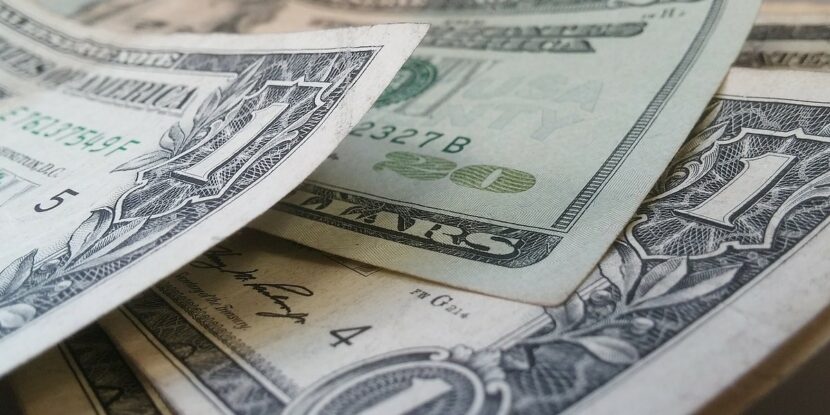This week, Congressman Alexander Mooney (R-W.Va.) put the classical gold standard back into congressional purview with his introduction of H.R. 5404 and his excellent Wall Street Journal op-ed, “Steel and Aluminum? Let’s Talk About Gold.” The op-ed served to introduce the bill to the wider world. Adopting it would make the dollar legally convertible to a fixed weight of gold.
Kudos to Representative Mooney for putting forward a bill — modeled after Jack Kemp’s Gold Standard Act of 1984 — to spark an important conversation on across-the-board economic growth. As Nathan Lewis has written for Forbes.com, the “Magic Formula” for economic growth boils down to:
Low Taxes and Stable Money. A country that has the Magic Formula soon finds itself rising above its neighbors; a country that goes in the opposite direction withers and crumbles under a constant press of domestic difficulties.
Lewis also recently published a deeply informative book on how the gold standard is the optimal way to ensure stable money, titled Gold: The Last Standard.
The architects of President Ronald Reagan’s economic boom well understood the importance of preserving the value of the dollar when crafting a movement that, as Ralph Benko noted for Forbes.com, created over $100 trillion in wealth worldwide (yes, that is “trillion,” with a “t”). Benko attributes the success of the supply-side movement, in which he served as an early member, to exactly the two factors referenced also by Lewis — stable money and low tax rates:
The supply-side economic formula – low marginal tax rates coupled with high integrity money (optimally the classical gold standard, then and still supply-side orthodoxy)… has never been particularly well understood by the political elites…They trend confused on monetary policy, preferring the academically respectable and well-intended, but ultimately misguided, monetarism. Nevertheless, whenever the supply-side policy mix is tried it works.
It is noteworthy that in discussing his appointment as director of the National Economic Council by President Trump, Larry Kudlow identified these two same factors as key (at 16:07).
The supply-side movement’s embrace of this “magic formula” was also echoed in a recent column I wrote remembering the life of supply-side pioneer Jeffrey Bell:
Bell was part of a small brigade of radical political insurgents who were determined, as Kemp’s Brain Trust, to end the stagflationary economic status quo of the ‘70s. Bell… Bell shocked the political establishment by defeating Case in the Republican primary, and he did it by running a focused campaign on one big idea: that economic growth could be restored by implementing a 30 percent, across-the-board marginal tax rate cut, coupled with restoring integrity to the dollar.” [Emphasis added]
Although Jack Kemp’s 1984 Gold Standard Act attracted important co-sponsorship from other members such as Newt Gingrich and Connie Mack, monetary policy reform was delegated to the Fed rather than enacted by Congress. Nonetheless, gold was crucial to the supply-side boom. As Brian Domitrovic wrote for Forbes.com, the role of gold during the supply side revolution is:
…probably the single greatest secret in the history of modern monetary policy. After mid-1982, it looks like the Fed followed a gold price rule for quite a while. This, of all things, is where we got both the defeat of the horrible stagflation of the previous dozen years and the mega-boom of the 1980s and 1990s. The secret wasn’t Volcker or monetarism or anything like that. It was adherence to the market price of gold… The missed opportunity, of course, was not to formalize the gold-price rule, say through a commitment to convertibility. This would have been a piece of cake to do at any moment in the eighteen years after 1982, since the market price of gold was parked in a tight band. It was never done, and sure enough the Fed tired of stabilizing gold. Money got loosed in the early 2000s, and gold headed up big time to Fed indifference. Thence came the housing bubble and the Great Recession, thanks a lot and very much.
Prof. Domitrovic’s inference (one shared by Prof. George Selgin, among others) was definitively confirmed last year by Chairman Alan Greenspan, who, as reported by The National Pulse, told the World Gold Council’s Gold Investor:
I view gold as the primary global currency.
Gold, along with silver, is one of the only currencies that has an intrinsic value. It has always been that way. No one questions its value, and it has always been a valuable commodity, first coined in Asia Minor in 600 BC.
But today, there is a widespread view that the 19th century gold standard didn’t work. I think that’s like wearing the wrong size shoes and saying the shoes are uncomfortable! It wasn’t the gold standard that failed; it was politics. World War I disabled the fixed exchange rate parities and no country wanted to be exposed to the humiliation of having a lesser exchange rate against the US dollar than it enjoyed in 1913.
Britain, for example, chose to return to the gold standard in 1925 at the same exchange rate it had in 1913 relative to the US dollar (US$4.86 per pound sterling). That was a monumental error by Winston Churchill, then Chancellor of the Exchequer. It induced a severe deflation for Britain in the late 1920s, and the Bank of England had to default in 1931. It wasn’t the gold standard that wasn’t functioning; it was these pre-war parities that didn’t work.
Today, going back on to the gold standard would be perceived as an act of desperation. But if the gold standard were in place today we would not have reached the situation in which we now find ourselves. We cannot afford to spend on infrastructure in the way that we should. The US sorely needs it, and it would pay for itself eventually in the form of a better economic environment (infrastructure). But few of such benefits would be reflected in private cash flow to repay debt. Much such infrastructure would have to be funded with government debt. We are already in danger of seeing the ratio of federal debt to GDP edging toward triple digits. We would never have reached this position of extreme indebtedness were we on the gold standard, because the gold standard is a way of ensuring that fiscal policy never gets out of line.
When I was Chair of the Federal Reserve I used to testify before US Congressman Ron Paul, who was a very strong advocate of gold. We had some interesting discussions. I told him that US monetary policy tried to follow signals that a gold standard would have created. That is sound monetary policy even with a fiat currency.
After Congress failed to enact Kemp’s legislative mandate to convertibility to gold (as it was, to some degree, for 182 years), the idea of returning to the constitutional money contemplated by the Founders has largely sat idle — until now.
As Rep. Mooney stated in The Wall Street Journal, his bill to make the U.S. dollar convertible to a fixed weight of gold marks “the first such attempt since Jack Kemp’s Gold Standard Act of 1984.” Mooney deserves tremendous credit for his leadership in moving forward the overlooked ingredient in the “magic formula” for restoring a climate of equitable prosperity, the classical gold standard.


